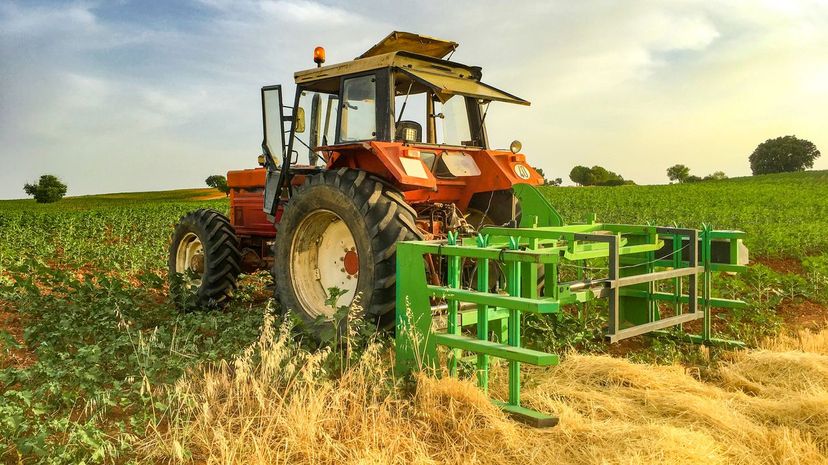
About This Quiz
Once upon a time, a tractor was a steam engine on wagon wheels that someone came up with to help do the job that had previously been managed by beasts of burden like horses, oxen and mules. The engine would never get tired or need to be fed. It just kept working, and it was a priceless innovation that changed the face of farming. Later, when the combustion engine showed up, tractors took a huge leap forward in power and versatility. By 1903, the first gasoline-powered tractors were rumbling through American fields, and you can even go to the Smithsonian to see the earliest models of a combustion engine on display.
Nowadays, there are many companies making tractors and just as many making the parts needed to diversify them so they can handle any task that may crop up. From massive spikes used for carrying bales of hay to forks that can lift pallets to front-end loaders and backhoes, there are quite literally dozens of parts you can buy for a tractor to modify it and adapt it to any and every task you can imagine. So whether you need a disc harrow or a potato planter, there's a part for the job. Let's see how many you can ID.
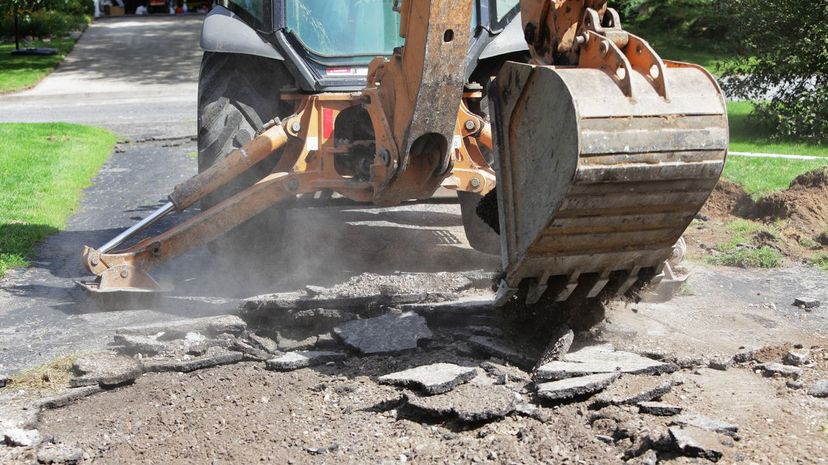
With an articulated arm and a digging bucket attached to it, a backhoe is perfect for digging holes. The name doesn't actually refer to the fact it's on the back of a tractor, rather that it digs into the earth backwards.
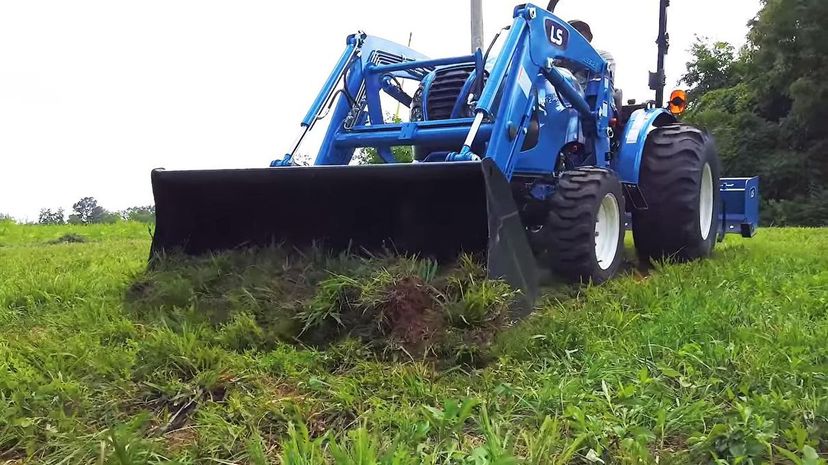
A box blade uses scarifiers, which are metal teeth, to break up the soil and the blade at the end of the box will smooth and level it out as it's pulled across.The box can also be filled with soil, gravel or any other groundcover to fill in gaps as it passes over. It's a pretty versatile tool, overall.
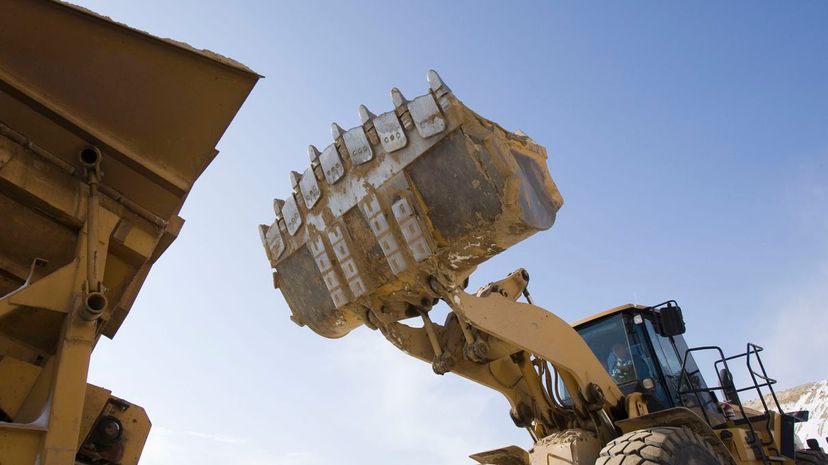
A front-end loader is your most efficient way to move large quantities of material ranging from dirt to gravel to random junk without just pushing it around. Depending on the tractor, you can lift upwards of a ton with a front-end loader.
Advertisement
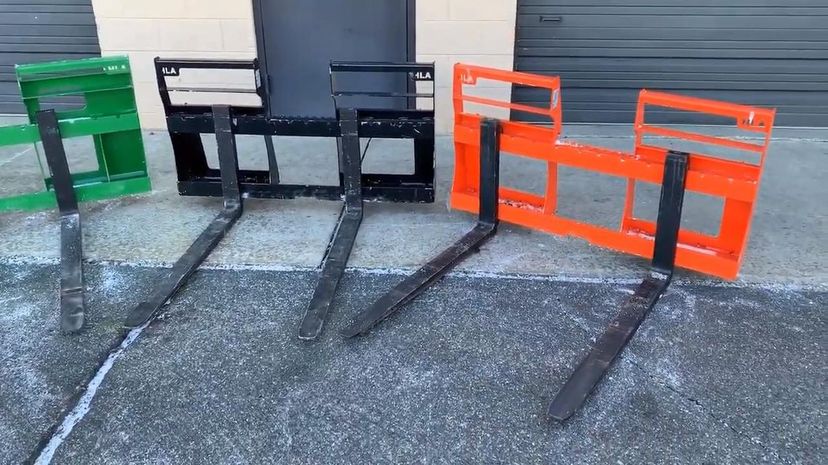
A fork or palette fork mounted on the front of a tractor basically converts the tractor into a forklift. Some models can be attached on a front-end loader while others attach to the same hydraulic arms as the loader but don't use the bucket.
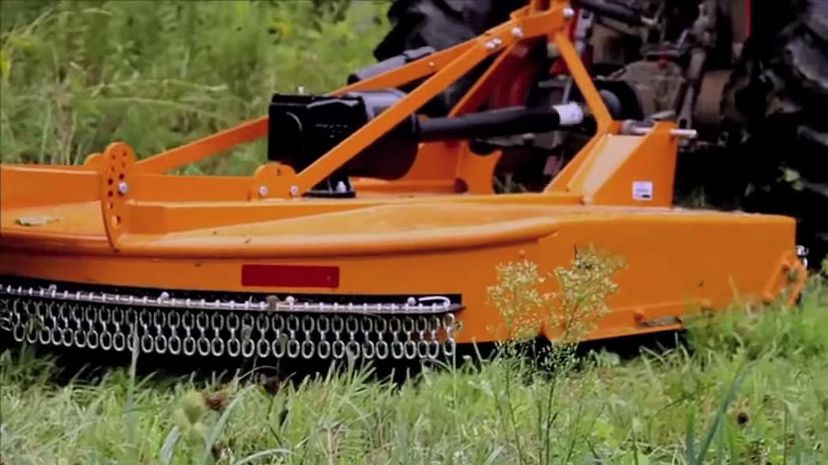
You have a few mowing options when it comes to a tractor, but a rotary cutter is your best bet for a quick and rough job like the side of the road, a back field, a pasture or anything else that just needs to be maintained but not well-coiffed and landscaped.

A debris grapple looks like a robotic claw made of fork tines. It can be used to open and close over debris like broken branches or even garbage. Anything that needs a grip of some kind to be picked up and moved can be moved with a debris grapple.
Advertisement
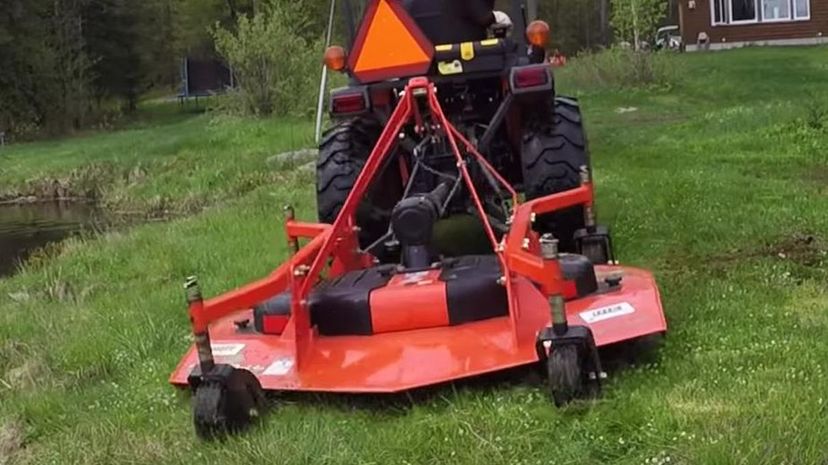
A grooming mower will probably have two or three spinning blades inside of it. It's pulled behind a tractor to trim down turf, like on a sports field or large areas that need to be well-manicured and look nice when they're done. The cut is much nicer than what a rough rotary cutter would give.
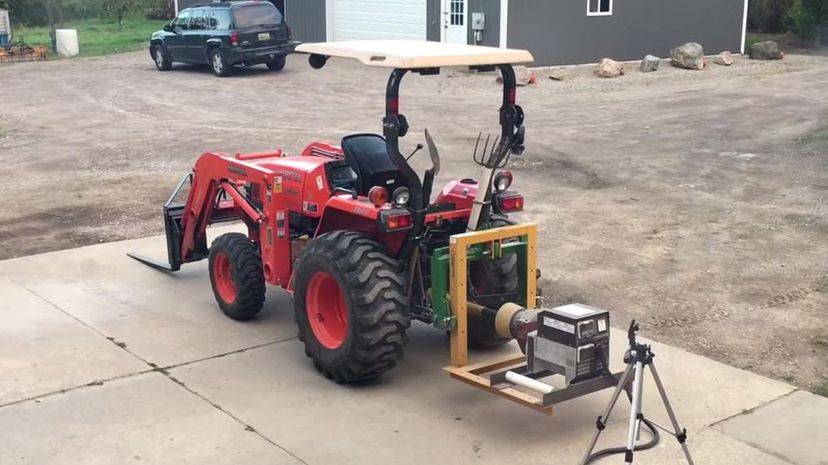
These are usually referred to as PTO generators, which means "power take-off." The generator is hooked up to the engine of the tractor and can run as a back-up generator on a farm during power outages or in the event of unreliable power grids.
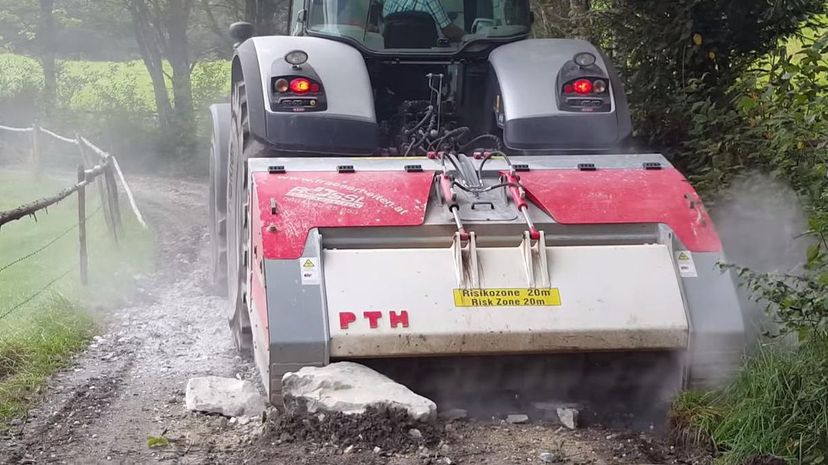
Every field is going to have rock and dry river beds. If you need to reduce large rocks down to small rocks — or even just — running a stone crusher across a field will pulverize them down to whatever size is needed.
Advertisement
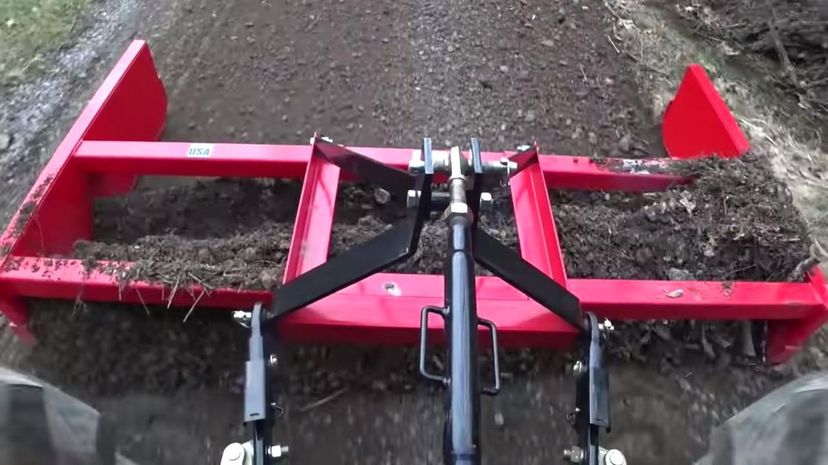
A land plane is a box with a pair of parallel blades inside that, when it is dragged down something like a gravel road, will dig into the surface and then allowed the gravel and a layer of dirt to be evenly distributed behind so the road stays even.
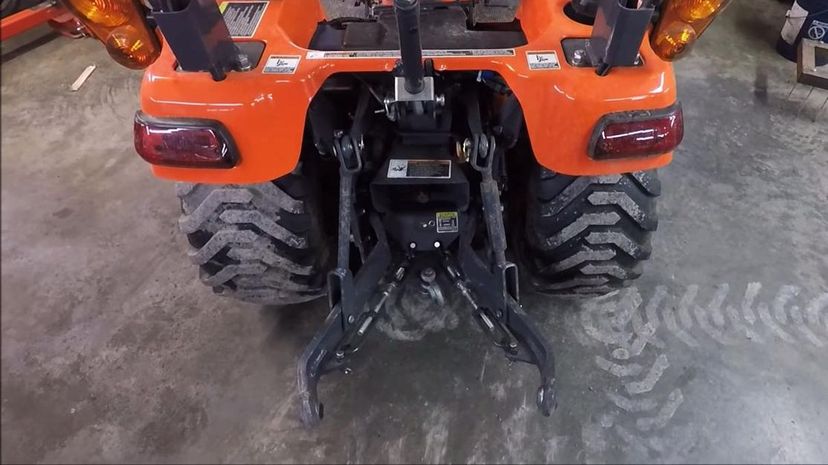
The three-point hitch on the back of a tractor is what most attachments are designed to attach to. The hitch has three arms on it, two that are controlled by the tractor's hydraulics and one that is not. Older tractors use a more rigid drawbar to attach to implements.
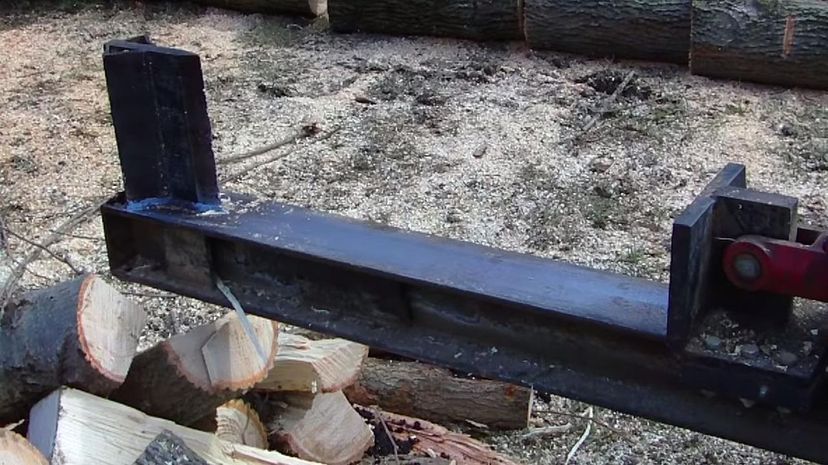
Attached to the tractor's PTO, a log splitter drives an axe-like wedge down through a log with enough force that it will basically split it like it was an egg. If you need to split a lot of large wood into smaller pieces for firewood, it will take mere moments.
Advertisement
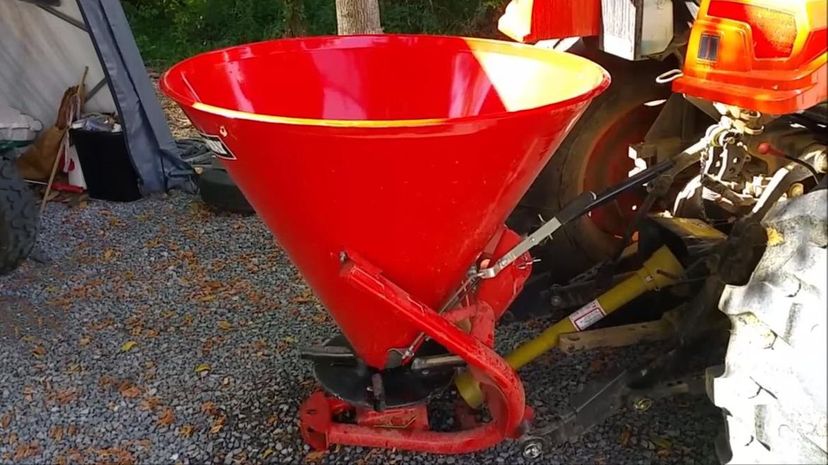
A spreader is a simple attachment that's mostly just a bucket or hopper that dispenses fertilizer, seeds — or whatever needs spreading — while a small spinning wheel scatters it about evenly.
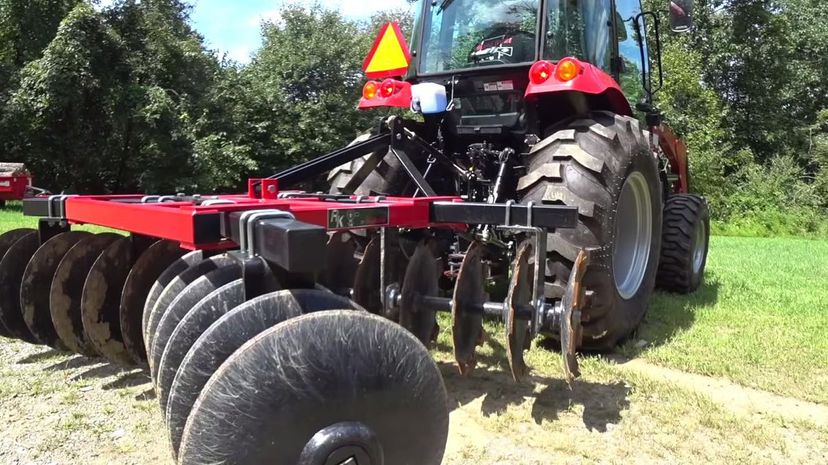
A disc harrow uses metal discs set at oblique angles to cut into the soil for tilling and chopping up crop remainders or weeds in preparation for another planting. This is a slightly different tool from a disc plow which is used for the primary tillage of a field.
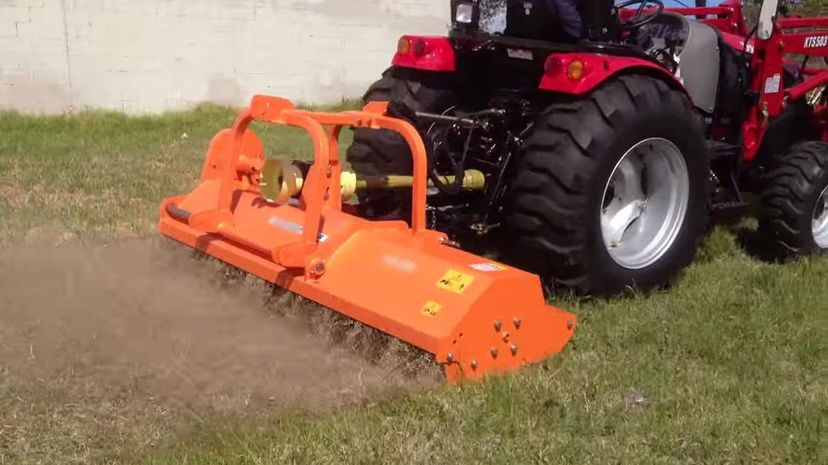
A flail mower may not give your lawn an award-winning cut, but it's a good choice for heavier grass that has the risk of having stones, sticks or other debris. When one of the cutting flails inside hits something, rather than shooting it out in a dangerous fashion, it just bounces off.
Advertisement
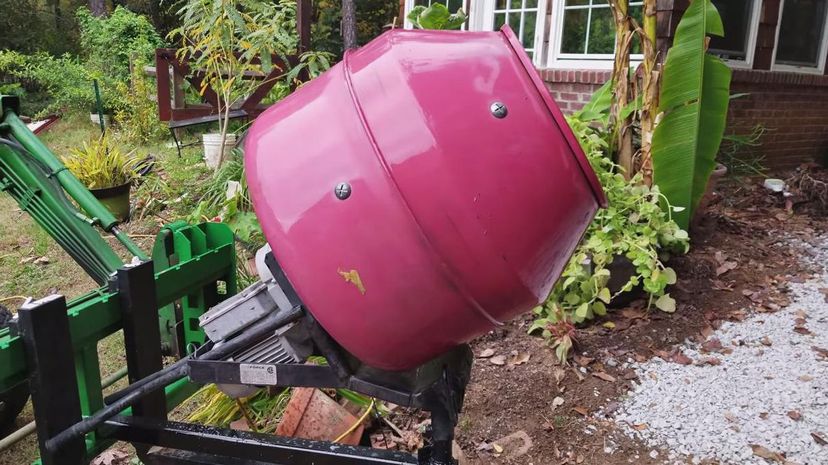
You don't need a cement truck to mix concrete when you have a concrete mixer tractor attachment. Helpful for small jobs, like shoring up foundations or cementing fenceposts, you can get one with about a 5 cubic foot capacity for under $1,000.
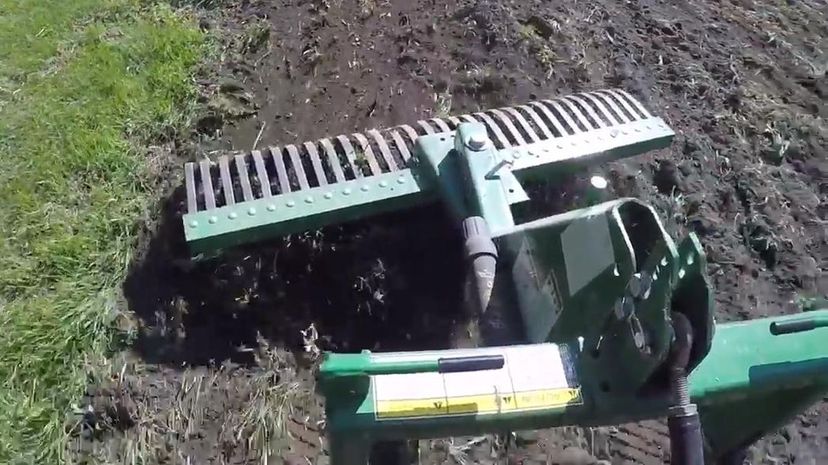
A landscape rake works like a typical yard rake to sift out large items while letting small bits filter through. It can clear scrub and trash from sandy, loose soil while evening everything out. They're also really good for cleaning beaches.
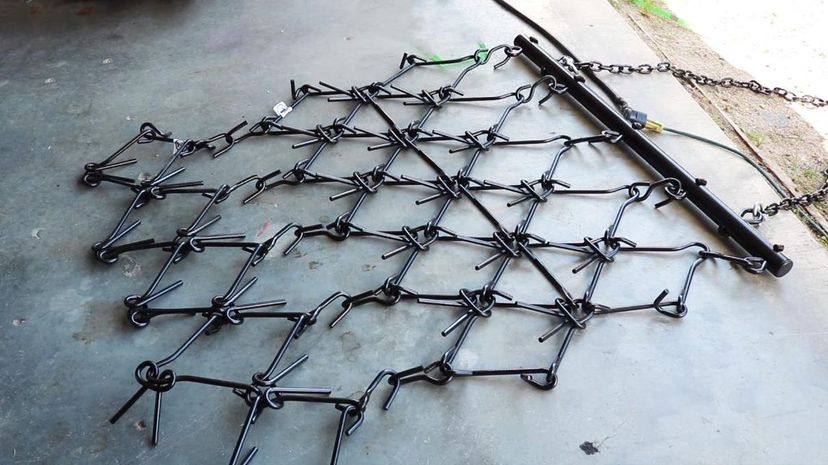
Drag harrows came in a variety of styles but were generally a flat bed set with flexible iron teeth that could be dragged behind a tractor. These were never made to function with modern hydraulics, which is largely why they're no longer used.
Advertisement
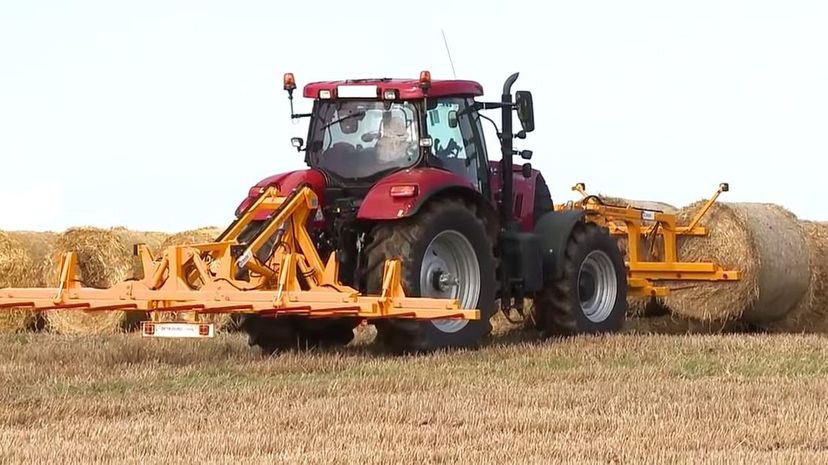
A bale spear attaches to the front of a tractor and can be either a single spear or a pair. Once hay has been securely baled, it just needs to be stabbed through with the spear and carried to wherever it needs to be.
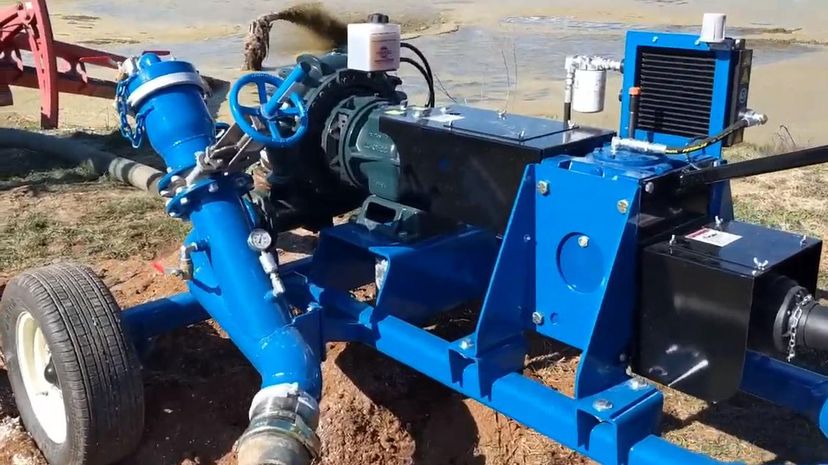
A PTO pump attached to the PTO on a tractor and can be used to either drain a flooded field, a pool, a basement or anything else you can imagine. It can also be used to pump water from a pond or river into a field for irrigation.
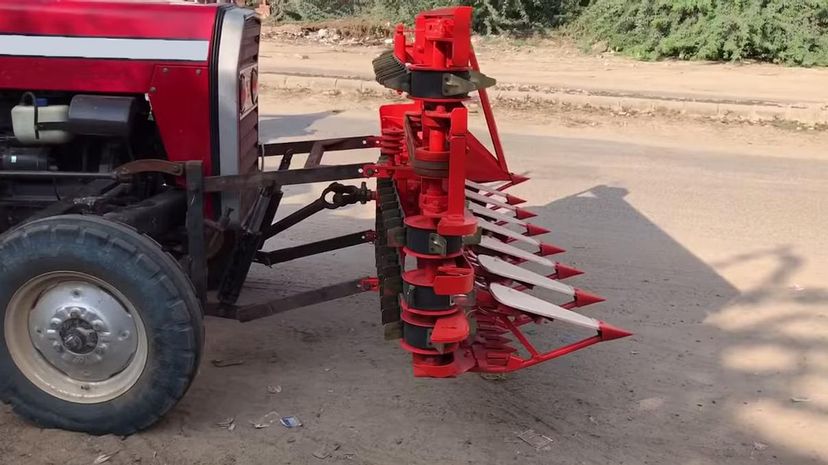
A vertical conveyor reaper looks like an attachment with large metal teeth on the front of a tractor. Those teeth separate the crops into easy-to-cut bundles that the blades on the cutter bar behind those teeth slice like scissors. The cut plant is held vertically and pulled by the conveyor to the side of the reaper.
Advertisement

An auger or posthole digger is a large, slow drill attached to your tractor's PTO. It transfers power from the engine to the drill to bore a hole into the earth. An auger makes burying fence posts a lot easier.
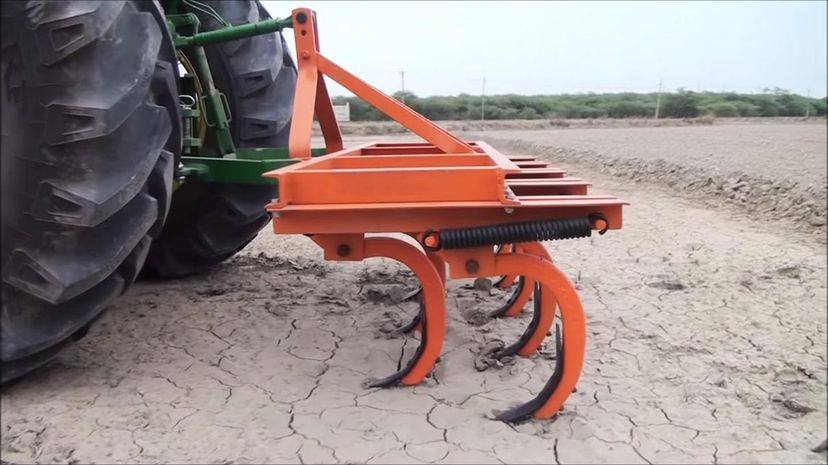
Front shanks on a cultivator are the teeth that do the actual cultivator work as it's dragged behind the tractor. They need to be made of a sturdy and heavy-duty metal to dig into hard soil, break apart the clumps and unearth rocks as they pass.
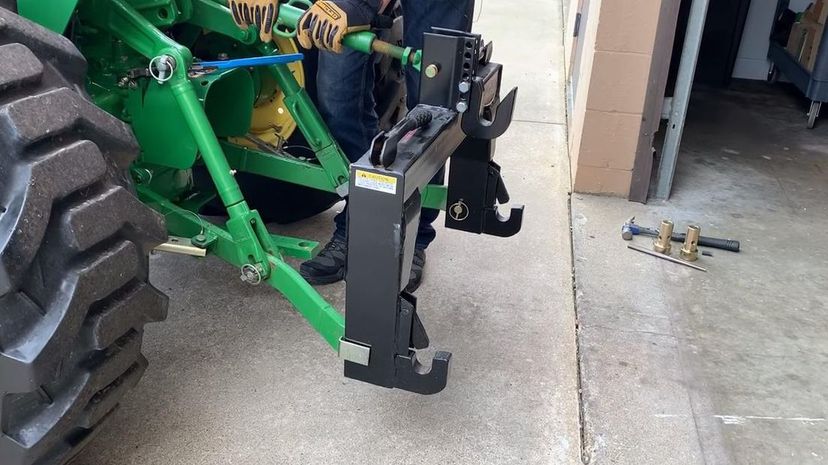
A quick hitch system allows for easy and fast coupling and uncoupling of large attachments to your tractor. Older hitch systems required pins to be hammered in and secured. A quick hitch is more of a snap in place and snap out of place system
Advertisement
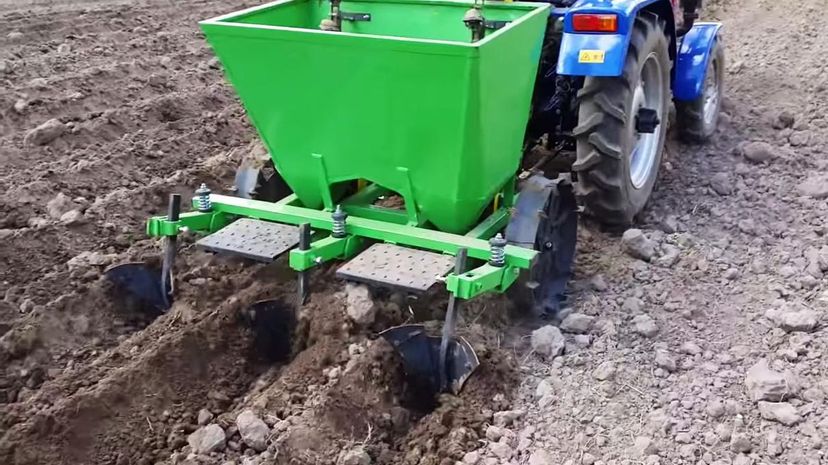
You can't plant a potato with just anything; you need a potato planter. A hopper drops seed potatoes down tubes so they can be evenly dispersed at a consistent depth, ensuring the best possible crop. It's much handier than doing it by hand.

Transplanting rice is grueling work to do by hand so a walk-behind rice transplanter on a tractor is a great addition. Manual transplant work could result in 700 square meters covered in a day. With one of these, that could go up to 10,000 square meters.
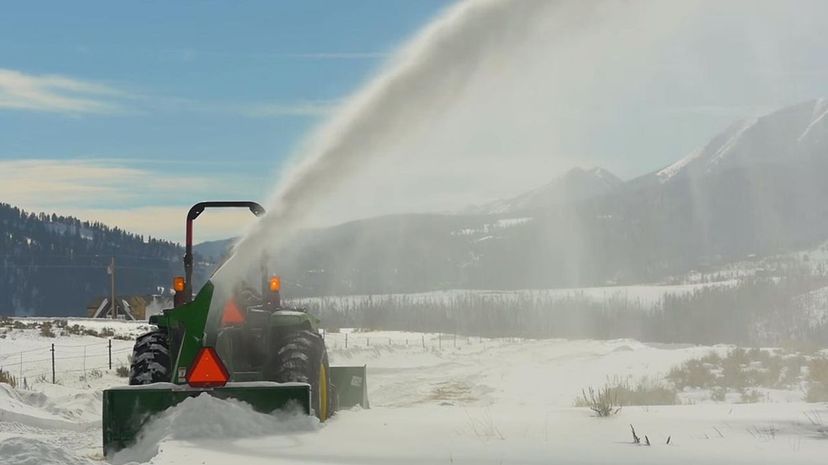
A handy attachment for people in northern states and Canada, a snowthrower attachment does just what you think it does. Dragged behind the tractor, it can clear wide swaths of snow on roads or in fields.
Advertisement
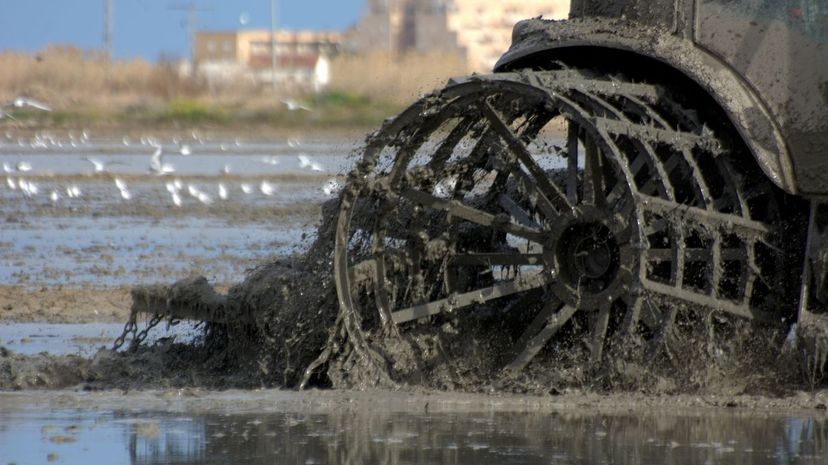
Cage wheels can be installed in place of the massive rubber tires you're used to seeing on a tractor. They afford much better traction in wet fields, like a rice paddy or other location with extensive mud and water.
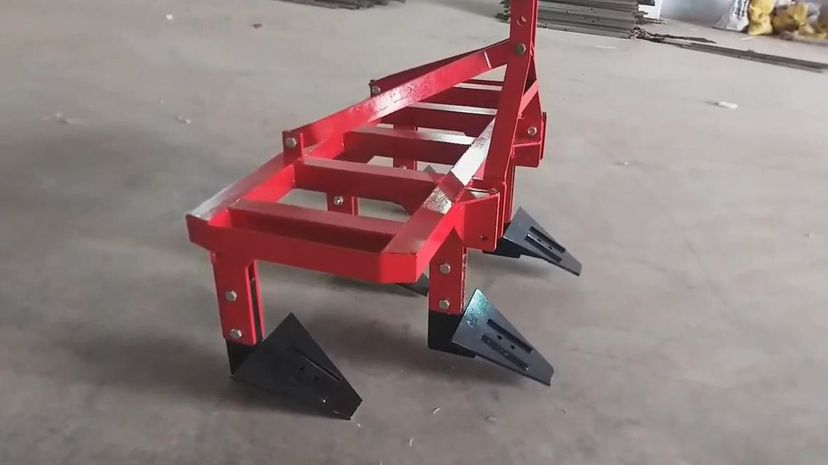
The small metal blades on this are called sweeps and because of their shape, this tractor part gets the name "duck foot cultivator." The tractor drags the duck foot cultivator, and the duck feet till through the soil. It's best used for shallow plowing in hard soil.
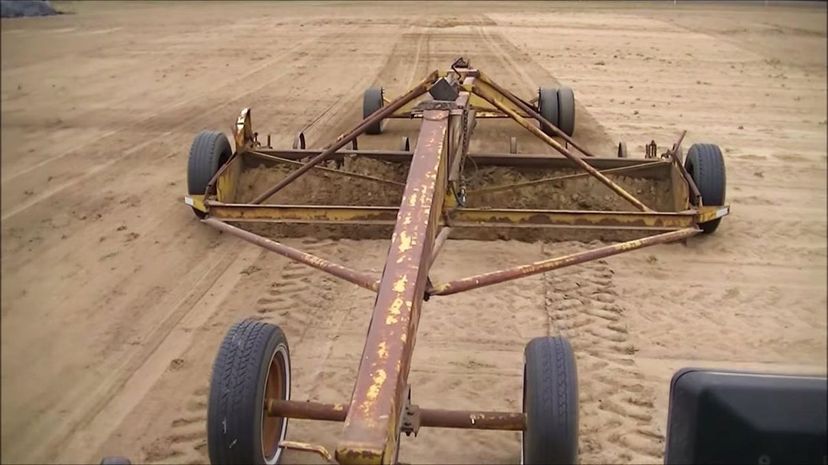
A land leveler is a large blade that you drag behind your tractor to create an even surface. This ensures even planting and also aids in water conservation by ensuring the land is saturated evenly when it is watered.
Advertisement

A combine harvester does three jobs combined, which is where the name comes from. It reaps the crops, threshes the grain or seeds free, then winnows the useable part away from the unusable waste material.

If you've ever heard the expression "separating the wheat from the chaff," this is what they're talking about. A thresher separates what you want from what you don't. Back in the day, this had to be done by hand with a flail or, in a pinch, by letting an animal trample the crop.
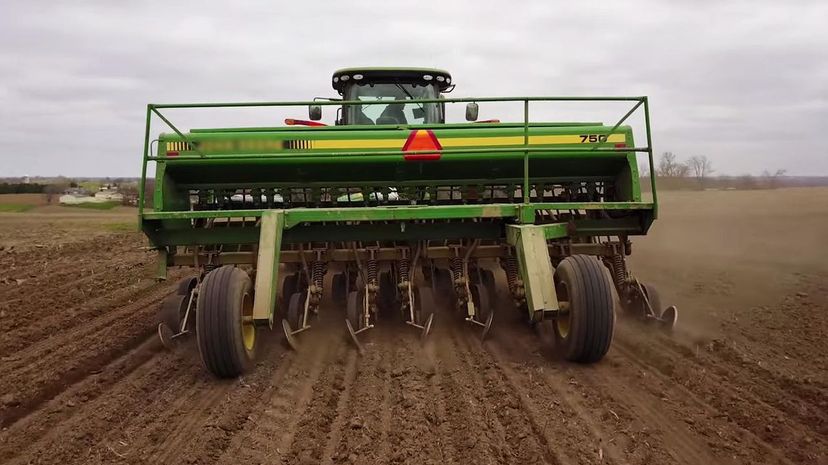
Planting seeds used to be a bit of a time-consuming task. A seed drill takes the guesswork out of how far apart and deep seeds should placed. It plants seeds perfectly and evenly every time.
Advertisement
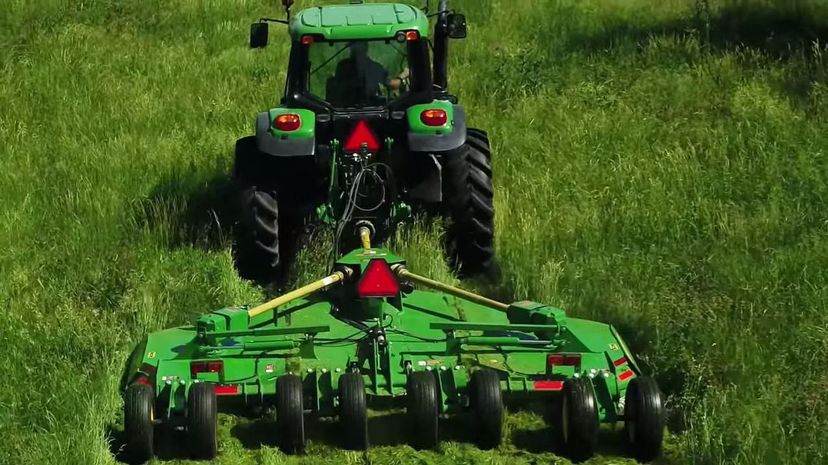
After a field has been harvested, the stalks of whatever crop was there before will be left over. A quick pass with the shredder chops up all that residual plant matter and mixes it in with the soil so it can act as fertilizer for the next crop.
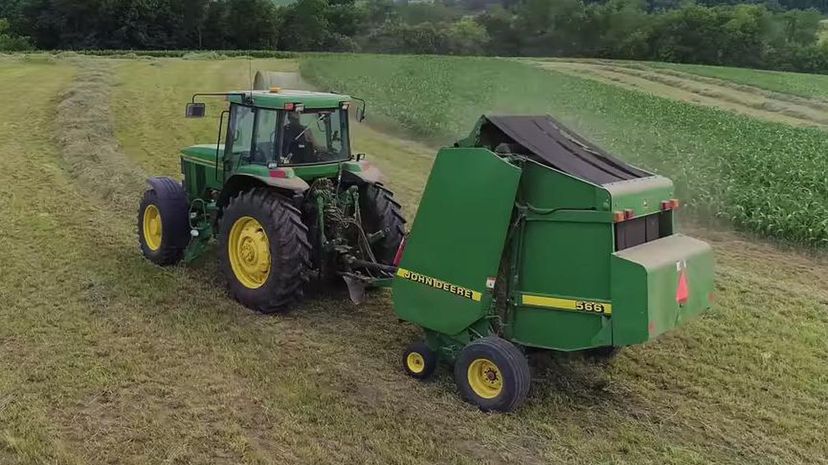
There are a handful of different balers you can attach to your tractor, but a round baler will roll up grass or straw and bind it into a large roll that is then deposited back onto the field. The bales can range in size from fairly small to larger than a human.
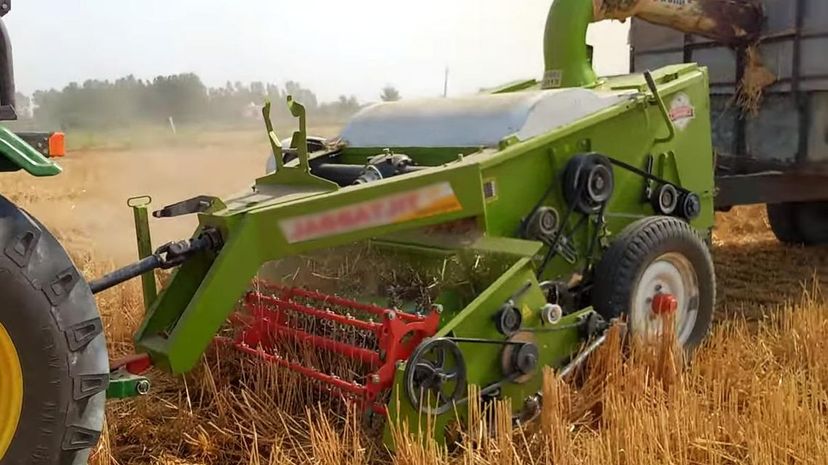
A straw reaper looks a lot like a lawnmower with an oscillating blade. After wheat is harvested, the stalks left over in the fields are chopped by the straw harvester, pulled inside and cleaned, and split into straw in one simple process.
Advertisement
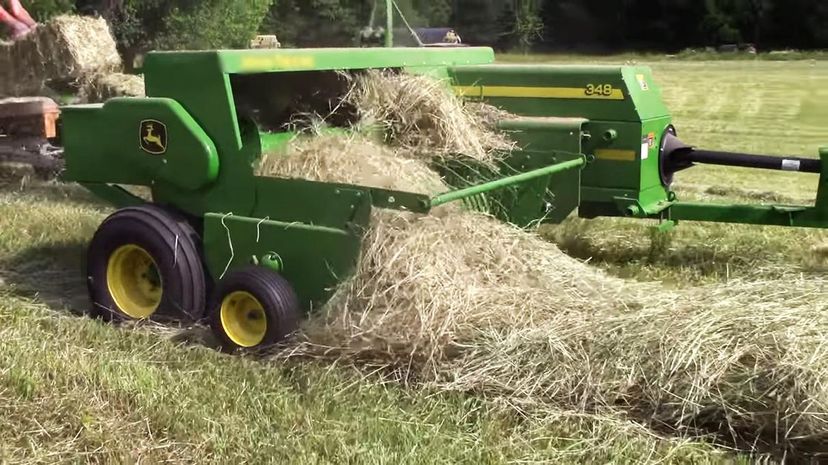
If you've ever wondered how hay goes from begin loose in a field to packaged up in square bundles, a square baler is the answer. It is dragged behind the tractor, its teeth pulling in the loose hay and compacting it into cubes that are bundled and popped out a ramp on the back of the baler.
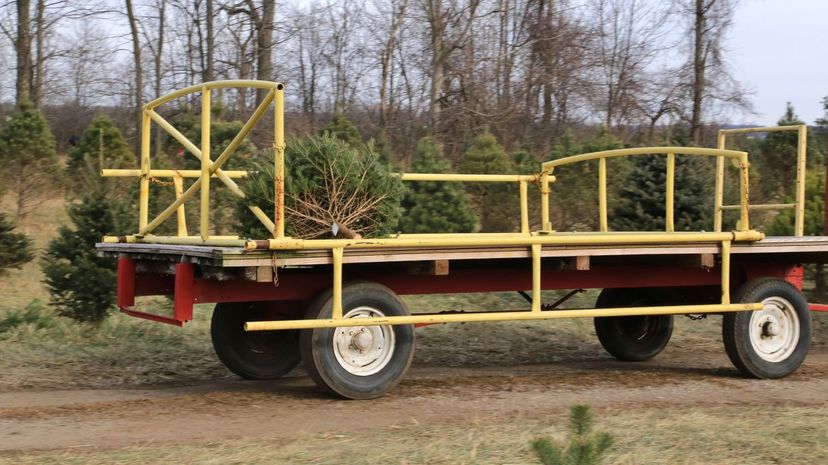
A trolley or a cart attachment for your tractor is a flatbed that gets dragged behind the tractor. Trolleys with side walls — like a wagon — can be used to haul hay, whatever has been harvested from a field, or even people.